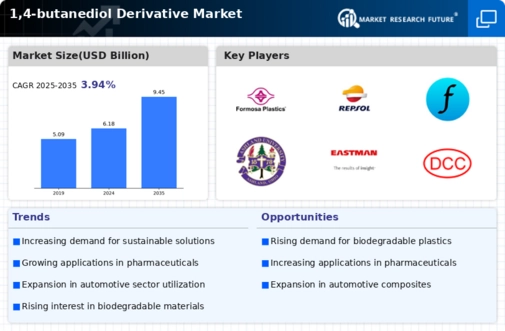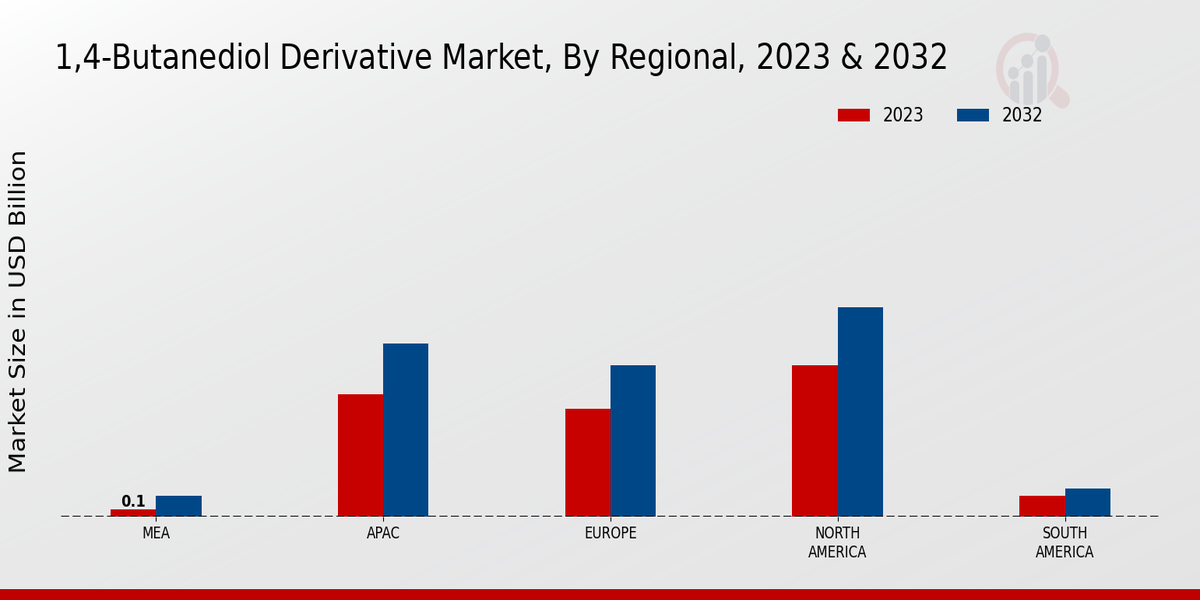Growth of the Textile Industry
The textile industry significantly influences the Global 1,4-butanediol Derivative Market Industry. With the rising demand for synthetic fibers and textiles, 1,4-butanediol derivatives are increasingly used in the production of spandex and other elastic materials. This growth is driven by consumer preferences for comfortable and durable fabrics. The textile sector's expansion is projected to contribute to the overall market growth, as manufacturers seek to enhance product quality and performance. As the industry evolves, the Global 1,4-butanediol Derivative Market Industry is likely to experience sustained demand, reflecting the changing dynamics of consumer behavior.
Expansion of the Automotive Sector
The automotive sector plays a pivotal role in the Global 1,4-butanediol Derivative Market Industry. With the increasing production of vehicles, there is a rising demand for materials that enhance performance and reduce weight. 1,4-butanediol derivatives are utilized in manufacturing various automotive components, including interior and exterior parts. The anticipated growth in the automotive industry is expected to contribute significantly to the market, with projections indicating a market size of 9.45 USD Billion by 2035. This expansion suggests that the Global 1,4-butanediol Derivative Market Industry will likely benefit from innovations in automotive technology.
Rising Demand for Eco-Friendly Products
The Global 1,4-butanediol Derivative Market Industry experiences a notable increase in demand for eco-friendly products. As consumers become more environmentally conscious, manufacturers are compelled to develop sustainable alternatives. This shift is particularly evident in industries such as textiles and plastics, where 1,4-butanediol derivatives are utilized as biodegradable materials. The market is projected to reach 6.18 USD Billion in 2024, reflecting a growing trend towards sustainability. Companies that prioritize eco-friendly practices may gain a competitive edge, thus driving further growth in the Global 1,4-butanediol Derivative Market Industry.
Increasing Applications in Pharmaceuticals
The pharmaceutical industry is emerging as a significant driver for the Global 1,4-butanediol Derivative Market Industry. 1,4-butanediol derivatives are utilized in the synthesis of various pharmaceutical compounds, including anesthetics and sedatives. The growing demand for advanced healthcare solutions is likely to propel the market further. As the global population ages and healthcare needs evolve, the pharmaceutical sector's reliance on these derivatives is expected to increase. This trend indicates a promising future for the Global 1,4-butanediol Derivative Market Industry, as it aligns with the broader healthcare advancements.
Technological Advancements in Production Processes
Technological advancements in production processes are transforming the Global 1,4-butanediol Derivative Market Industry. Innovations such as biotechnological methods and improved catalytic processes enhance efficiency and reduce production costs. These advancements enable manufacturers to produce high-quality derivatives at a lower environmental impact. As a result, companies are increasingly adopting these technologies to meet the growing demand for 1,4-butanediol derivatives. The projected compound annual growth rate (CAGR) of 3.93% from 2025 to 2035 indicates a robust growth trajectory, suggesting that technological progress will continue to drive the Global 1,4-butanediol Derivative Market Industry forward.


 Source: Primary Research, Secondary Research, MRFR Database and Analyst Review
Source: Primary Research, Secondary Research, MRFR Database and Analyst Review









